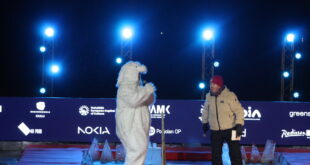The VR Hackathon is coming to Europe from San Francisco this weekend. With a slew of product releases and project sales of 14 million units, it is not without reason that 2016 is being called “The Year of VR”.
The VR Hackathon in Brussels, hosted by the Danish Sound Innovation Network and EUVR.org from January 15-17th, marks the start of what is being called “the VR year” because of both projected sales of 14 million units and a number of anticipated product releases: HTC’s Vive VR headset, Sony’s Project Morpheus, and the much-hyped Oculus Rift.
“There has been so much hype going on throughout 2015 and now it is all starting to happen. I can’t think of a better way, nor a better timing, to assemble the VR community in Europe and host a dedicated VR hackathon,” says Thomas Bärtschi, co-founder EUVR.org.
Though the event will attract hackers from all over Europe, one Nordic country will be strongly represented: 20 % of the participants will be Danes.
“Denmark has a long history of creating high end audio products as well as producing world class films and making state of the art games – and game engines. Actually it was a Danish company called Electrical Phono Film Company (today Ortofon) who were the first to merge audio and screen when developing the world’s first synchronized sound film system. With 3D sound being an instrumental part of a truly immersive VR experience, we believe that Denmark has all the right ingredients to be a key player in the emerging industry of VR,” says Eske Bo Knudsen, an Innovation Consultant at the Danish Sound Innovation Network.
Danish companies competing in the VR Hackathon include Liquid Media, Zaxis Games, and Molamil.
Opening the EU black box
The VR industry is centered around Southeast Asia and Silicon Valley. Although Europe has a number of business clusters dedicated to this type of technology, the industry remain very fragmented and unable to compete seriously at a global scale. The VR Hackathon in Brussels marks the start of an initiative addressing this challenge.
“Our ambition is to create a central hub and platform around which the European VR industry and enthusiastic grass root community can congregate. Today, around 50 Meetup Communities encompass more than 12.000 passionate VR enthusiasts. They need a common platform for networking and sharing,” says Thomas.
Eske hopes the close collaboration with the partners behind the hackathon will also help pave the way for putting the Nordics on the global VR map.
“Thomas and I have a lot in common. One of them being the ambition to help leverage the potential of VR talent and competences present in the Nordics. How? By attaching a Nordic train to the European and global high speed VR train. Personally, I believe we have a very good opportunity to do so,” adds Eske.
Will 2016 live up to the hype?
Older tech fans may be skeptical of the VR hype, after the failed promises of enthusiasts in the early 90’s, who predicted VR would be soon used by the masses (including VR equipment being standard on computers), and last year’s failure of Google Glass to pass the “early adopter” stage.
But Thomas disagrees.
“It is not going to be like in the 90’s when VR never took off. We are seeing a lower barrier of entry here, and that will do a lot for the community and getting VR to a mainstream audience as well. For example, we are already seeing the Gear VR, which you can use if you have a Samsung phone, which was a huge success and sold out on Amazon within 24 hours.”
As hardware becomes more available to individual consumers, it is only a matter of time before it VR ceases to be a niche technology.
“It is not actually that difficult to start producing VR content – you don’t necessarily have to be super advanced in tech. Companies like Unity are constantly making tools that make VR even easier to access and use. Youtube, for example, makes it possible to stream and upload 360 content,” says Eske.
“2016 is the year of convergence -hardware, software, content, will now be available to individual consumers,” he adds.
Growing diversity of applications
While VR has previously been relegated mostly to gaming, there been a growing diversity of applications under development, which enthusiasts believe will convert the masses. For example, Labster, a product aimed at students, provides users “access” to hundred thousand dollar medical equipment via a virtual lab. VR journalism, such as Project Syria, which places viewers at the scene of a bombing or refugee camp, made waves in September at the World Economic Forum. And Breakroom, which will release a mobile application early this year, is a VR workspace.
“I have strong hopes for the whole mobile platform because of the low entry barrier and the accessibility. Just connect your mobile phone and get access to VR experiences on the go,” says Thomas.
He notes that the social aspect of VR will be a huge driver in the consumer market.
“People today want to share experiences with each other. We should not underestimate that people will want to share this with their friends.”
VR technology has been flourishing in the Nordics, with companies like aforementioned Breakroom, Khora, Makropol, Triband, and Resolution Games, and many more making their mark on the global VR scene.
“We are only seeing the tip of the iceberg right now. The development is unstoppable and is happening extremely fast,” concludes Thomas.
Follow Eske, Thomas and the other participants at the VR Hackathon in Brussels, from January 15-17th, and experience the possibilities for yourself.
 Nordic Startup News Early Stage Startup News From The Nordics
Nordic Startup News Early Stage Startup News From The Nordics


